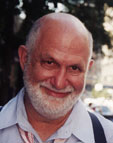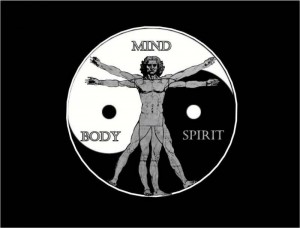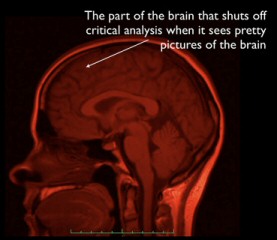
1. 20 years after onset of alcohol dependence, about three-fourths of individuals are in full recovery; more than half of those who have fully recovered drink at low-risk levels without symptoms of alcohol dependence.
2. About 75 percent of persons who recover from alcohol dependence do so without seeking any kind of help, including specialty alcohol (rehab) programs and AA. Only 13 percent of people with alcohol dependence ever receive specialty alcohol treatment.
These conclusions, based on the largest study of people’s life histories of alcohol use ever conducted (43,000 people), completely undercut the accepted wisdom that addiction (to alcohol, at the very least) is a “relapsing brain disease,” and they also bring into sharp relief the utter ineffectiveness of the most commonly utilized treatment programs. Beyond this study, the accepted wisdom regarding addiction also fails the tests of sound reasoning, common sense, and an honest appraisal of existing evidence — a case that Peele has been persuasively making for decades. And yet when Americans want the best available information and recommendations about addiction to alcohol and other drugs, we’re told by Dr. Drew, HBO, and the NIH that addicts have a relapsing brain disease, that they can never learn to moderate their drug use, and that their incurable diseases can be most effectively treated by checking into rehab and attending twelve-step meetings. Is it any wonder why our best efforts to help people with drug problems are so ineffective?
Sadly, if we instead look to the most renowned non-government authority on matters of mental health, the American Psychiatric Association, we’ll find only further confusion. In another blog post, Peele describes the APA’s latest attempts to redefine the concept of addiction for the latest version of the Diagnostic and Statistical Manual, DSM-5. Peele was an advisor for the substance abuse disorders section of the current version of the DSM, DSM-IV, so he understands the process well. The upshot is that the DSM-5 Substance-Related Disorders Work Group, chaired by University of Pennsylvania psychiatrist Charles O’Brien, is proposing some major changes, including ditching the term “dependence” in favor of “addiction” (a term not used in the DSM-IV to describe substance abuse problems). Beyond that, the group also wants to create a whole new category–Behavioral Addiction–to refer to pathological gambling. The rationale behind designating only pathological gambling as an addiction (but not pathological sex-having or video game playing or anything else) is that, according to O’Brien, “substantive research” indicates that “pathological gambling and substance-use disorders are very similar in the way they affect the brain and neurological reward system.” Peele, as he’s done his entire career, clearly shows the fallaciousness of O’Brien’s reasoning, which suffers from the same confusions and category errors that have been holding our understanding of addiction (and mental health, more broadly) hostage for decades:
O’Brien’s statement represents a rear-guard effort to frame addiction as a brain disease. There is, indeed, imaging research on the ways various drugs affect the brain. But that’s not the key to addiction. I designed and administer an addiction treatment program, and I can assure you that not one person is sent to our program—or any other program—because of a PET scan. People enter rehab because of regular, habitual screwups connected to substance use—compulsive involvement and continued use of a drug (or other involvements) despite chronic harm.
Indeed, as O’Brien points out, powerful experiences like gambling impact the same “neurological reward system” that drugs do. But so do many other rewarding activities. If there is some such higher level “neurological reward system,” then it can’t be said to exclude anything, from sex to food to gambling to video games.
Nor is O’Brien correct in suggesting that cocaine, nicotine, alcohol, and marijuana follow the same neurological pathways in the brain. Each substance has a very different chemical profile, including the timing of effects and the rewards people derive.
And if gambling affects the same brain reward system as substances, as O’Brien claims, why is it a “behavioral” addiction and not simply an addiction? DSM-5 further muddies understanding of addiction in its handling of two other non-drug appetites—“hypersexuality” and “binge-eating.” Neither is regarded as an addiction. Is this because they do not follow the same “neural reward pathways” as drugs and gambling? Binge-drinking can bring on addiction, but not binge-eating? How come? And is gambling really more neurologically, or intensely, rewarding than sex?
The problem with the DSM-5 approach is in viewing the nature of addiction as a characteristic of specific substances (now with the addition of a single activity). But think about obsessive-compulsive disorder (OCD): People are not diagnosed based on the specific habit they repeat—be it hand-washing or checking locked doors. They are diagnosed with OCD because of how life-disruptive and compulsive the habit is. Similarly, addictive disorders are about how badly a habit harms a person’s life. Whether people use OxyContin or alcohol, people aren’t addicted unless they experience a range of disruptive problems—no matter how addictive the same drug may be for others.
Unfortunately, misunderstanding and misinformation are becoming part and parcel in health education across-the-board in our society. As with our political system, the agencies and organizations responsible for informing the public about matters of health and well-being have been way too corrupted by special interest groups (particularly) and the profit motive (more generally). Moving toward a sensible, fact-based, integral understanding of health requires that we critically appraise and analyze all information that comes to us, not only from the media, but also from the “leading experts” themselves. I have no doubt that the vast majority of individuals working at the NIH, the APA, as well as the countless mental health professionals across the country serving people in need, have only the best of intentions and want above all else to make a positive difference in the world. The same can be said of the members of the United States Congress, but a system can become corrupt, broken, and ultimately ineffective (even destructive) despite the good intentions of most individuals within the system. Our current way of understanding and treating addiction — like the broader “war on drugs” we’ve been impotently waging for years — just isn’t cutting it. Stanton Peele may not have all the answers, but his approach makes a lot of sense to me.




 I just finished reading
I just finished reading